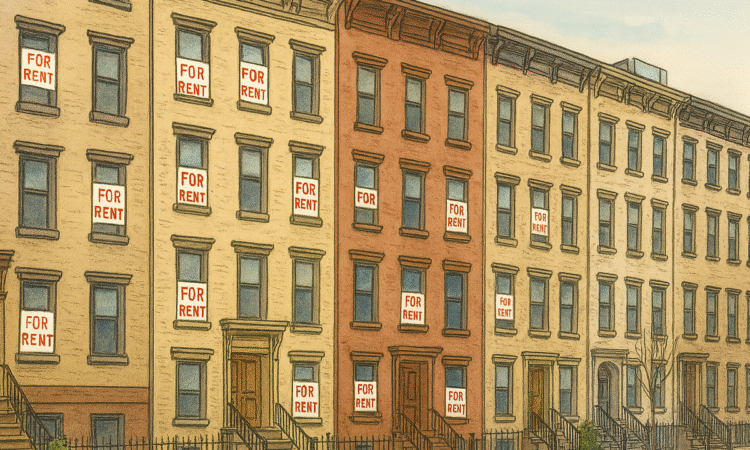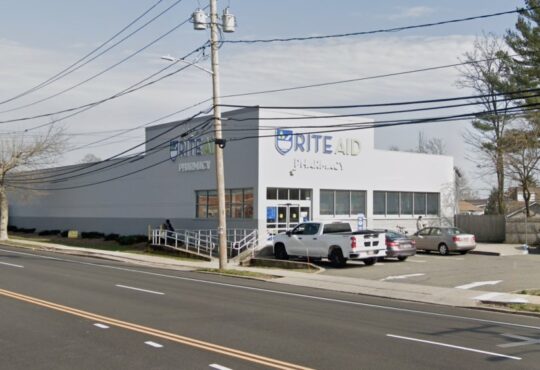Shaky Economy, Lack Of New Leases Drag Down Rent Growth For Major Multifamily REITs

Major apartment REITs reported a shortage of new leases and stagnant rent growth, with some owners going so far as to lower guidance for the remainder of the year as economic concerns grow.
Renewed leases remain steadier as people stay put in uncertain economic conditions, but a dearth of new leases is stifling rent growth, according to third-quarter results released by five multifamily landlords this week.
“Blends began the quarter ahead of our expectations but over the last 45 days have decelerated beyond typical seasonality, which we largely attribute to the economic uncertainty,” said UDR CEO Michael Lacy, describing combined rent growth for new and renewed leases. “This led to our third-quarter blends being below our prior expectations of 2%.”

Bisnow/created with assistance from Microsoft Copilot
The slowdown in new leases and correlated softness in rent growth come as the multifamily market tries to work through a record wave of new construction delivered last year. This year, economic woes including inflation, elevated interest rates and slower job growth — now combined with fallout from the federal government shutdown — have landlords further concerned.
The differential between what landlords are getting for new versus renewed leases can be substantial.
MAA’s new-lease rent growth was negative 5.2% in Q3, while its renewal lease rent growth was 4.5% in the same period. Essex Property Trust’s new-lease rent growth was negative 0.5%, but its renewal lease rent growth was 4%. UDR’s renewal rent growth was 3.3%, but its new-lease rent growth was negative 2.6%.
“Retention: It’s been the saving grace of apartments this year,” Piper Sandler Managing Director Alexander Goldfarb said on UDR’s Thursday earnings call.
Average effective rent growth dropped to just 0.5% year-over-year in Q3, marking the first time in five quarters that national rent growth decelerated, according to CBRE. Household formation and new tenant demand both likely slowed due to lackluster job growth, slowing rent growth. Last year, the firm predicted that multifamily rent growth would end 2025 at 2.6%.
AvalonBay Communities dropped its full-year guidance on core funds from operations, putting the midpoint at $11.25 instead of the previously forecast $11.39 per share. Executives attributed the decline largely to dips in average lease rates.
Rents had been leaning lower since August, a trend that has persisted through October, AvalonBay CEO Ben Shaw told analysts on Thursday.
AvalonBay’s stock price hit a 52-week low Thursday morning, but by market close it had rebounded and was off less than 1% from its open.
Similarly, MAA lowered its full-year guidance on core funds from operations, putting the midpoint at $8.74 per share instead of the $8.77 it predicted in July.
MAA’s average effective rents dropped 0.4% year-over-year to $1,693, largely because of “the lower recovery trajectory” on new-lease rents as a result of droopy employment numbers and the overall economy, CEO Bradley Hill said on a Thursday earnings call.

In June, the U.S. economy lost 13,000 jobs, marking the first net loss since December 2020, according to The New York Times. The unemployment rate in August was 4.3%, according to the Bureau of Labor Statistics, basically flat from August 2024. What has happened after the summer is less clear, as the government shutdown has restricted access to and collection of employment statistics.
A report from payroll firm ADP says the private sector lost 32,000 jobs in September, but the report isn’t a direct comparison to the standard of government data.
Economic fears weigh on many Americans, with the Consumer Confidence Index falling for a third straight month in October. On Wednesday, the Federal Open Market Committee cut interest rates at its second consecutive meeting, although Federal Reserve Chair Jerome Powell repeatedly said that a third cut in December isn’t guaranteed.
Interest rate cuts have the potential to entice would-be homebuyers off the sidelines, which would eat into the lease renewals that have buoyed multifamily balance sheets so far this year. Home sales were already up 4.1% in September from the previous year, with first-time homebuyers making up 30% of the month’s sales, according to the National Association of Realtors.
The regionality of housing markets means that the pain of slow rent growth doesn’t apply equally to every landlord, however.
Rents are down in key markets across the country, according to RealPage data. In Denver and Austin, rents are down nearly 8% so far this year, and Phoenix rents have fallen just over 5%. Broadly, rents in the South declined 1.7% over the last 12 months, while Western rents fell 0.4%.
One REIT was able to capitalize on the regionality of apartment demand, with its portfolio concentrated in a market that has posted strong rent growth this year: the Bay Area. San Francisco reported year-to-date rent growth of 7.1%, according to RealPage.
Essex Property Trust reported that Northern California, specifically San Francisco and Santa Clara counties, was its best-performing region and attributed that to the artificial intelligence and tech jobs that cluster there.
Essex reported blended third-quarter rent growth of 3%.
“This is a proven example of the competitive advantage of our low-supply markets,” Essex CEO Angela L. Kleiman said.
But other areas remain burdened by economic troubles ranging from the layoffs and shutdown turmoil in Washington, D.C., to a sagging entertainment industry in Los Angeles, causing headaches for landlords that operate there.
“We believe broad economic uncertainty and slower job growth, evidenced by a downward revision to job growth numbers, contributed to prospects being more cautious about making decisions to move and to operators prioritizing occupancy over new-lease rent,” MAA’s Hill said.






